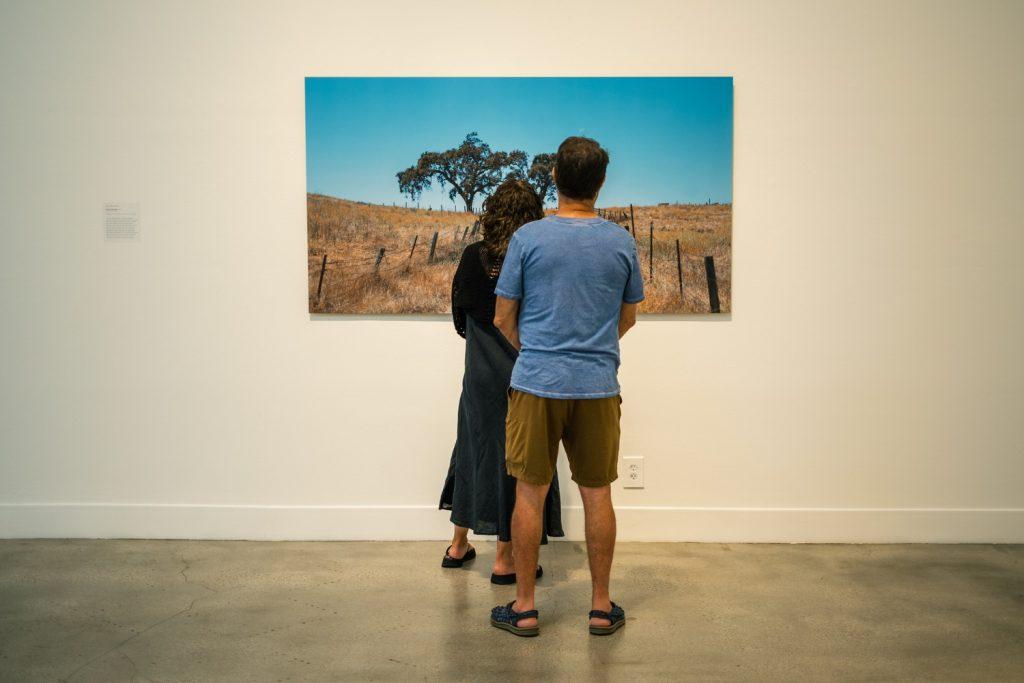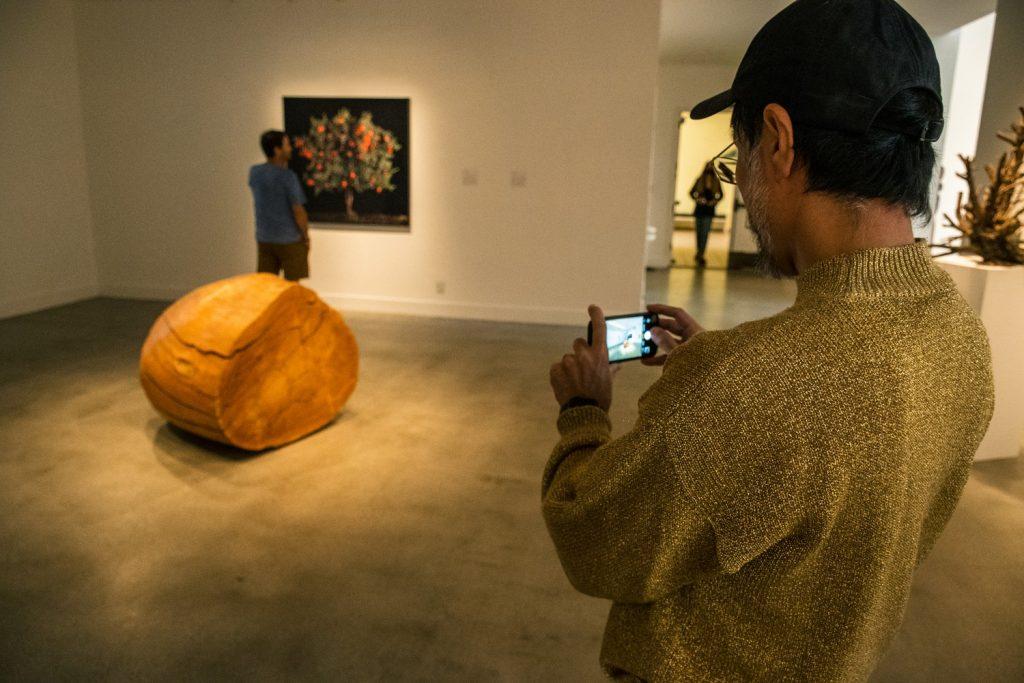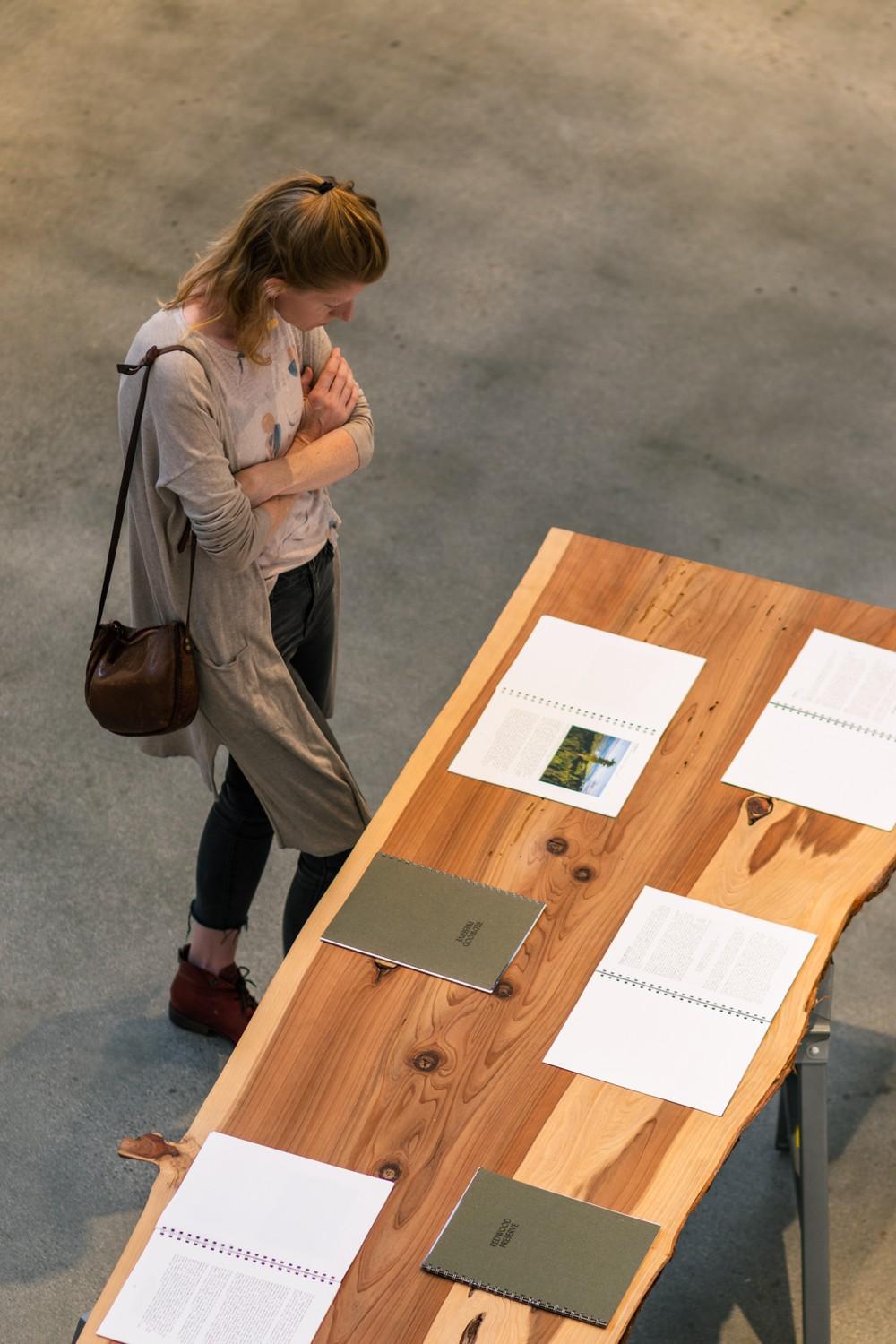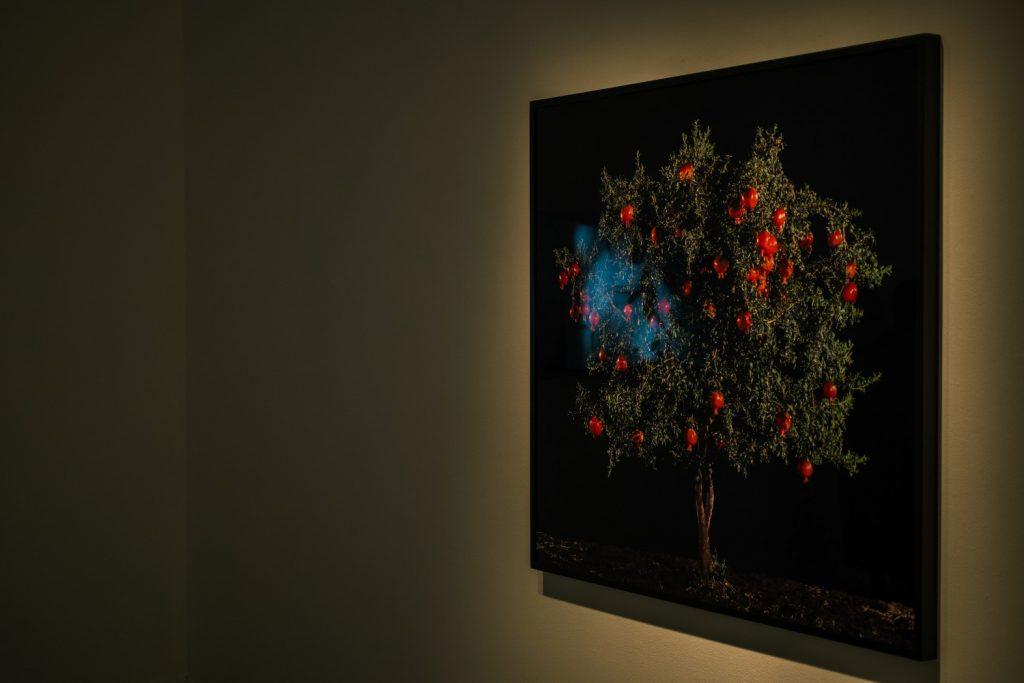
Two museum attendees stand in front of Ken Gonzales-Day’s “Two Men Were Taken,” 2007 on Sept. 10. The artwork was captured by light jet on aluminum and displayed two trees at the end of a dirt path, a site of lynching in California history. Photos by Lucian Himes
Roots. Leaves. Branches. Ashes. Decay.
Each of these words are associated with either life or death through the idea of trees. Trees have a way of telling generations about history and their symbolism can be found in many religious origin stories, according to the To Bough and To Bend’s website.
The Frederick R. Weisman Museum of Art unveiled a new exhibit, “To Bough and To Bend,” on Sept. 10 and it will remain open until March 26.
The exhibit focuses on the power of trees to tell a story. From giving life in major world religions to displaying evidence of disaster — trees contain stories of the past. Bridge Projects curated the gallery, which features work from 30 artists who sought to offer their interpretation of trees and their various properties through their work.
Senior Lauren Chivers worked the front desk at the museum for about a year before this exhibit made its debut. Chivers said viewing the art in the exhibit does not merely stop at being something to admire — but instead, the art calls on the viewers to think deeper about the world we live in.
“I like that the exhibit has a sort of call to action,” Chivers said. “It talks about climate change, and nature preservation and conservation. I think you can’t help but feel like there’s something that you personally can take away from the piece and implement in your own life.”

Senior art minor Sydney Segura attended the exhibit with her peers. The University hosted a reception at the exhibit for art history and art majors and minors to mingle while exploring the various works, Segura said.
One piece of art on display Segura said caught her attention was Katie Paterson‘s “Future Library.” The work is part of a collection of stories called the Future Library Project.
In May 2014, Paterson planted 1,000 trees in a region of Norway. These trees will become a book of stories, where each year a writer contributes a story to a trust that will be locked away until it is published in 2114, according to their website.
“I thought it was a super cool concept where it’s an anthology of texts that are written every year, and it won’t be released until 100 years in the future,” Segura said. “It will be printed on paper that has been made from a forest that was planted at the very beginning of the project.”

Senior Avery Engleman attended the exhibit with her biology class as part of their lab science course. Engleman said she underestimated how much the artwork would connect to what they were learning.
“We’ve talked a bit about the importance of the cell cycle and photosynthesis and things in the realm of environmentalism,” Engleman said.

Engleman said as an Economics major she is drawn to the research and scientific methods included in Jarrett Mellenbruch’s Redwood Preserve Project.
“It was really interesting because not only was it an art piece, but it also was kind of a project that the artist was working on,” Engleman said. “To create a kind of Bitcoin, like a cryptocurrency, related to saving the California redwoods.”
Engleman said this project stuck with her even after she left the exhibit because of the connection the artist made to bridge the gap between economics and art.
“Tying environmentalism to economic incentives through the medium of art was really cool,” Engleman said.
As a Sustainability major, Chivers said she finds the topics and the specific pieces particularly impactful.
“It’s really impactful for me thinking about the pieces that are about preserving the redwoods or the intersection between race and climate change,” Chivers said. “I think that the art is very provocative and impactful in that way.”

Chivers said a particular piece that strikes her is the 2010 photograph captured by Tal Shochat titled Rimon (Pomegranate). The staged image shows a tree donned with pomegranates against a pitch black background.
The themes within this particular piece of art parallel ideas similar to those found in the stories of Genesis and Song of Psalms as well as the novel “Paradise Lost” by John Milton. The tree displayed in this artwork alludes to the Tree of Knowledge of Good and Evil, according to the artwork’s description.
“I like looking at that piece and thinking about the way that we discuss biblical symbolism and fruit of desire in my classes and then how it shows up in my on-campus job,” Chivers said.
____________________
Follow the Graphic on Twitter: @PeppGraphic
Email Audrey Geib: audrey.geib@pepperdine.edu

